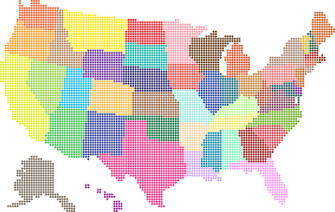
[CORRECTED: Sept. 29]
New York takes first place while Arizona ranks as the worst state for teachers to work in, according to a new report from the personal finance website WalletHub.
The study evaluated 21 key indicators across two categories—"Opportunity & Competition,” which covers salaries, pensions, and tenure protections, and “Academic & Work Environment,” which includes average pupil-teacher ratio and quality of school systems. After calculating a total score based on averages across all metrics, WalletHub ranked each state and the District of Columbia from the best to worst places for teachers to work.
New Jersey, Illinois, Connecticut, and Pennsylvania rounded out the top five best states. New York racked up the most points in opportunity and competition due to its high rate of public-school spending per student, while New Jersey took first spot in the academic and work environment ranking because of its high-quality school systems and low pupil-teacher ratio. Illinois ranked second for both highest annual salary and lowest projected teacher turnover, likely contributing to its overall high placement.
See also: New Report Names the Best Cities to Live in If You’re a Teacher
On the opposite side of the spectrum, the top five worst states for teachers included Hawaii, South Carolina, Mississippi, and Florida. Hawaii took last place in the opportunity and competition ranking, weighed down by having both the lowest average starting salary—$24,508—and the lowest average annual salary, at just $34,308.
Arizona’s low ranking can be attributed to its high pupil-teacher ratio and projected teacher turnover rate. These factors are indicative of its current teacher shortage—which has gotten so bad, some school districts in the state are hiring teachers without bachelor’s degrees or even any teacher training or experience.
But some critics have questioned the validity of WalletHub’s findings. After the release of the first annual report in 2014, Washington Post reporter Valerie Strauss noted that the rankings don’t include key metrics like job protections or fair evaluations. And while WalletHub breaks down each state’s rank and score, the full data set for the study isn’t provided—a drawback that Education Week Teacher noted after the release of the first report. [CORRECTION: WalletHub now includes both Teacher Tenure Protections and Presence of Annual Teacher-Evaluation Requirement in their methodology. While full data sets are not provided on the website, they are available upon request.]
Want to know how your state stacks up? Take a look at the interactive map below, or check out the online report for a full list of rankings.
Source: WalletHub
Photo courtesy of Pixabay.